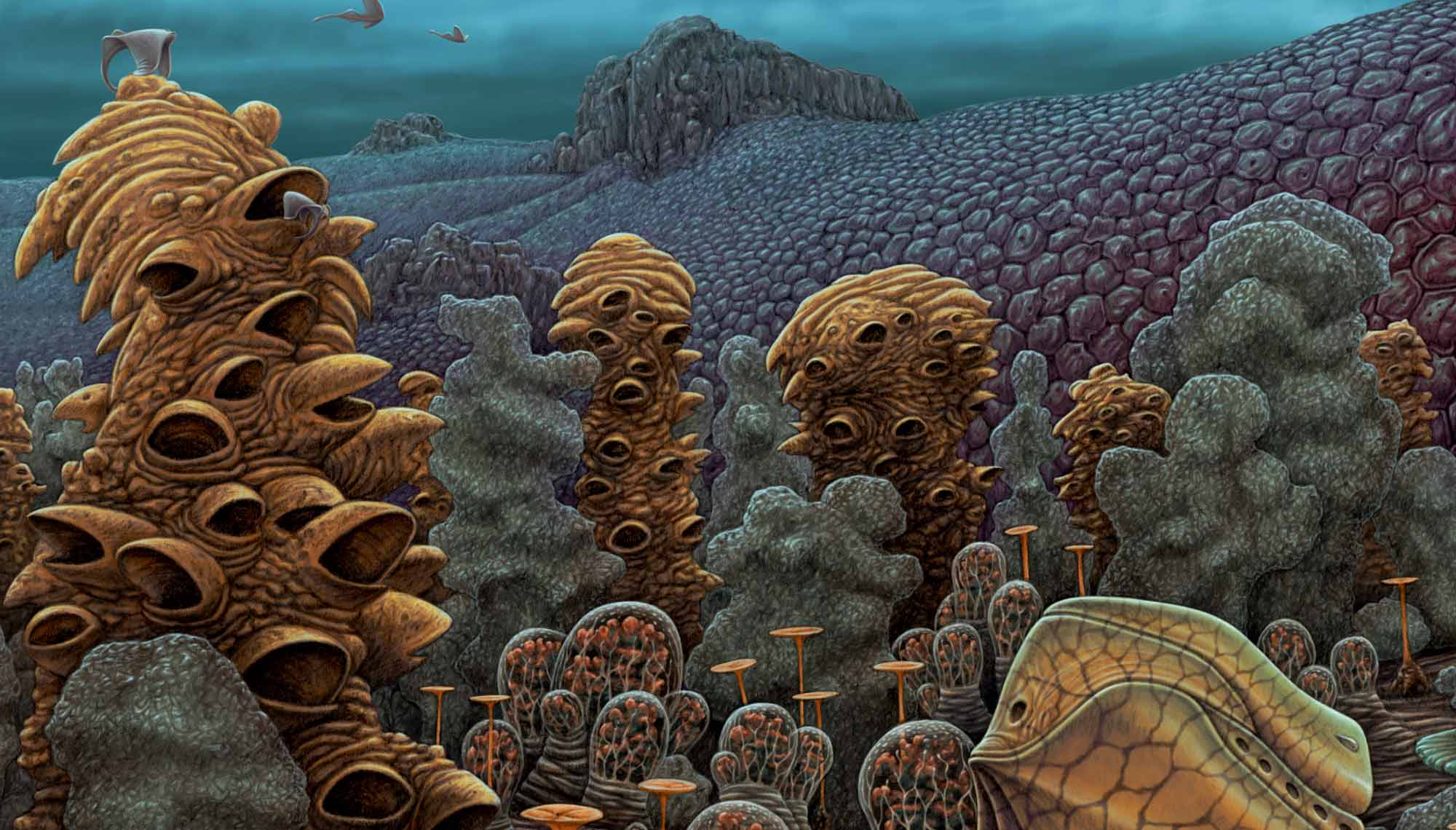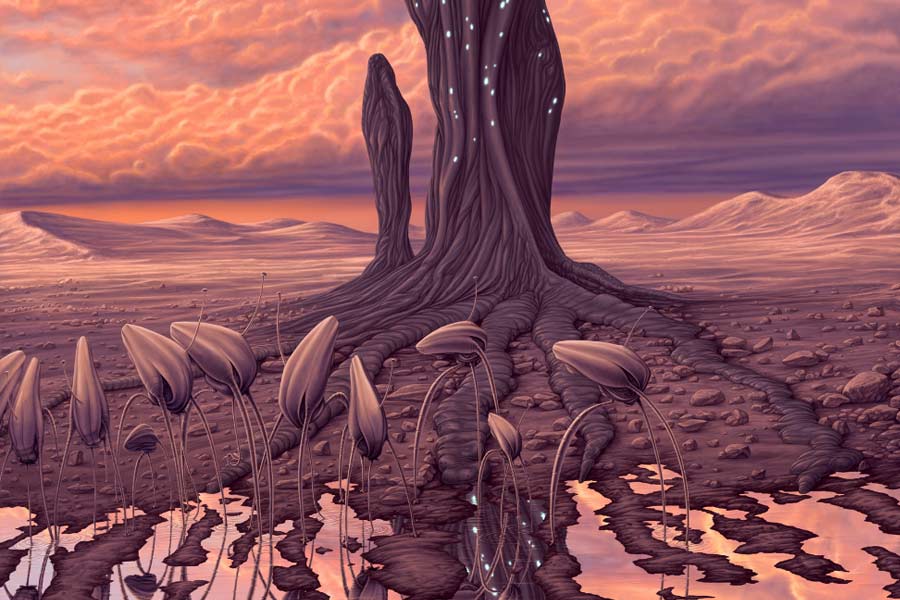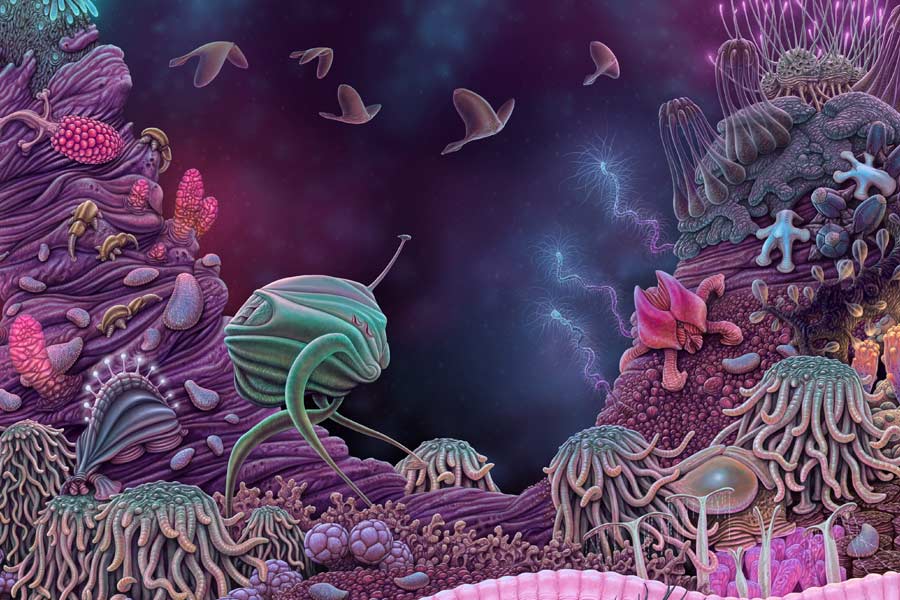The Low Forest
A land made rugged by its lifeforms.
A vast and dynamic biome, the Low Forest presents a unique set of challenges.
A relatively dry and sunny climate favors some types of forest over others. The tangled matrix of the fast-growing tube carpet forms the floor along the majority of this habitat. It grows so quickly that other species of photosynthetic creatures find it advantageous to be more mobile, lest they be crowded out and overtaken. The scarcity of water combined with the tendency towards mobility versus upward growth means this forest is relatively short in height - hence its name. There is a rich and varied food web here, with many organisms feeding on the tube carpet, keeping its ravenous growth in check. It also offers a complex labyrinth in which to hide from the many predators working tirelessly for their next meal.
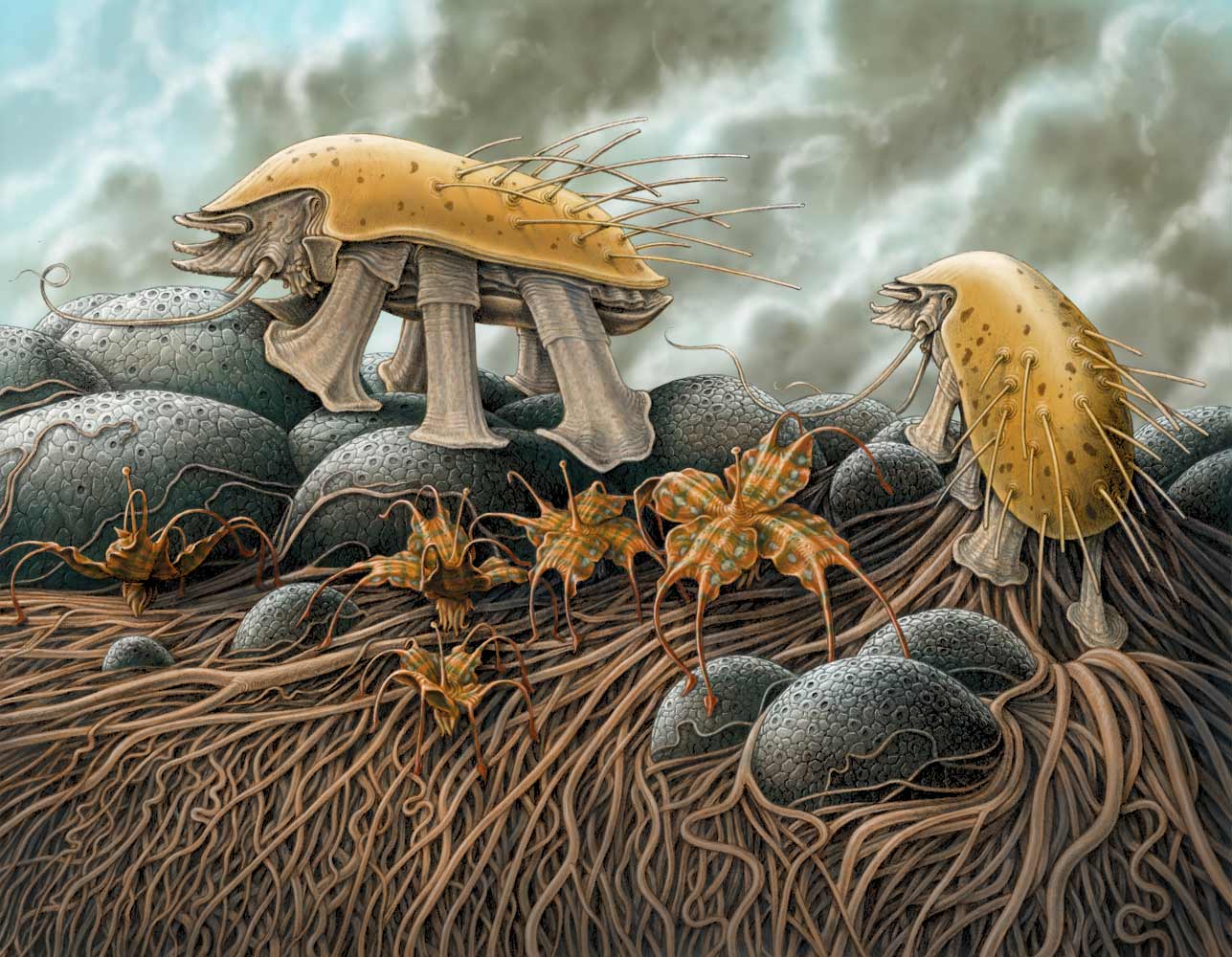
New Lands
2015, pencil and digital
Diversified energy acquisition
Most creatures on Veteris have a photosynthetic component to their physiology, with an inverse relationship between overall mobility and reliance on sunlight. The large plodding walkers, for example, are fairly active and rely most heavily on grazing for their energy intake. The creatures that resemble flowers are motile, but move less frequently. The long strands of the tube-carpet organism grow at a rapid pace to stake their claim over as much ground area as possible. The large round textured semi-spheres are not phased by this tactic, as they employ an electro-chemical defense over their outer surface to keep the strident ropes at bay.
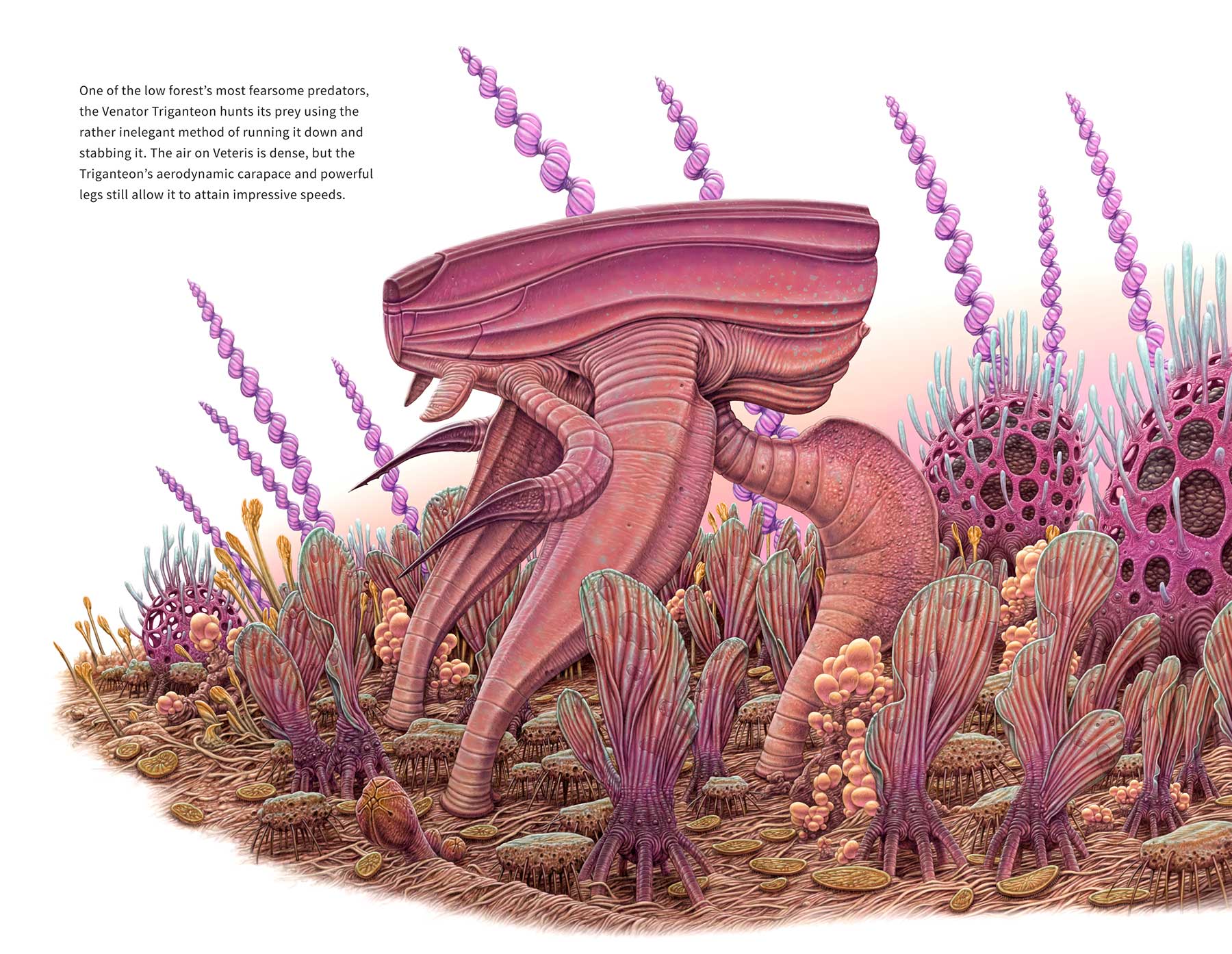
Low Forest Triganteon
2025, pencil and digital
One of the low forest’s most fearsome predators, the Venator Triganteon hunts its prey using the rather inelegant method of running it down and stabbing it. The air on Veteris is dense, but the Triganteon’s aerodynamic carapace and powerful legs still allow it to attain impressive speeds. A large variety of other creatures here employ their own unique strategies to harness energy from the sun while resisting being covered by the ubiquitous tube carpet below.
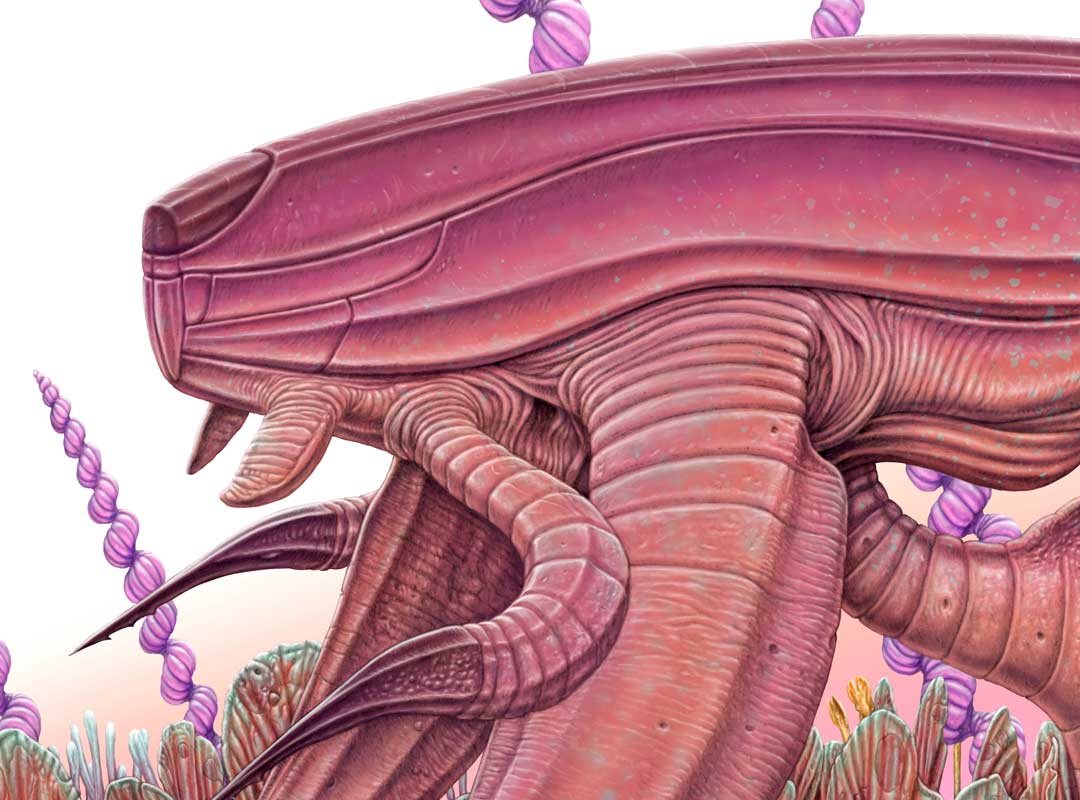
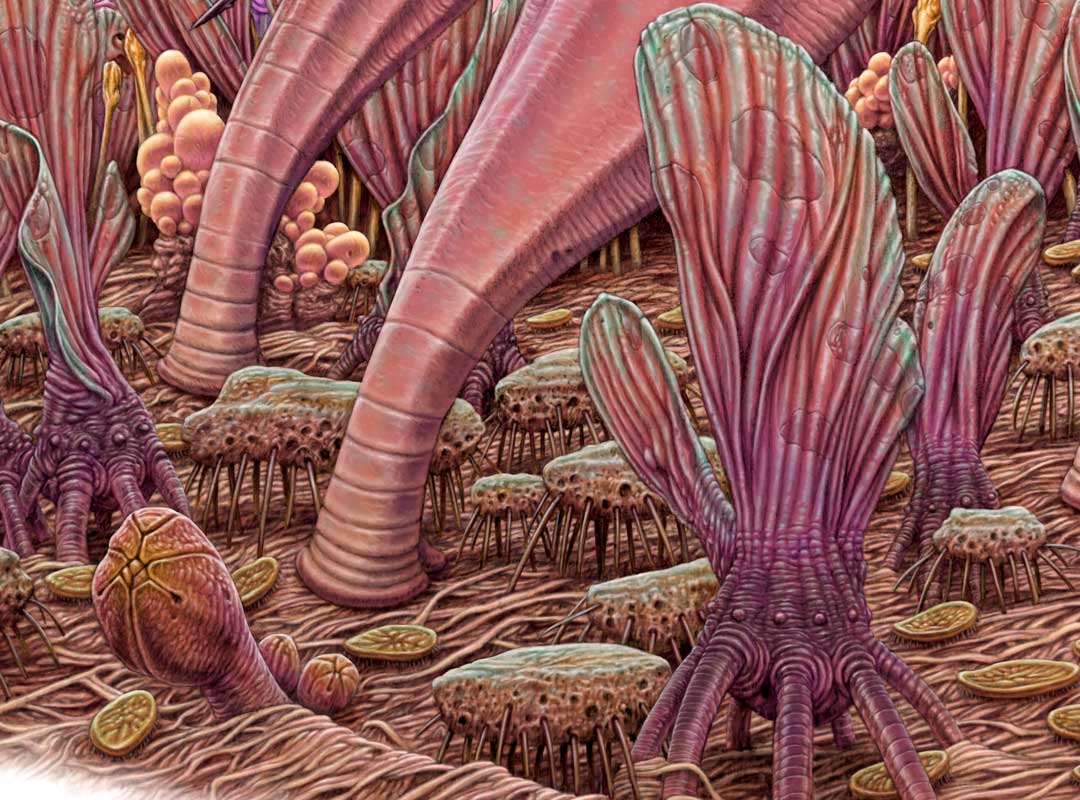
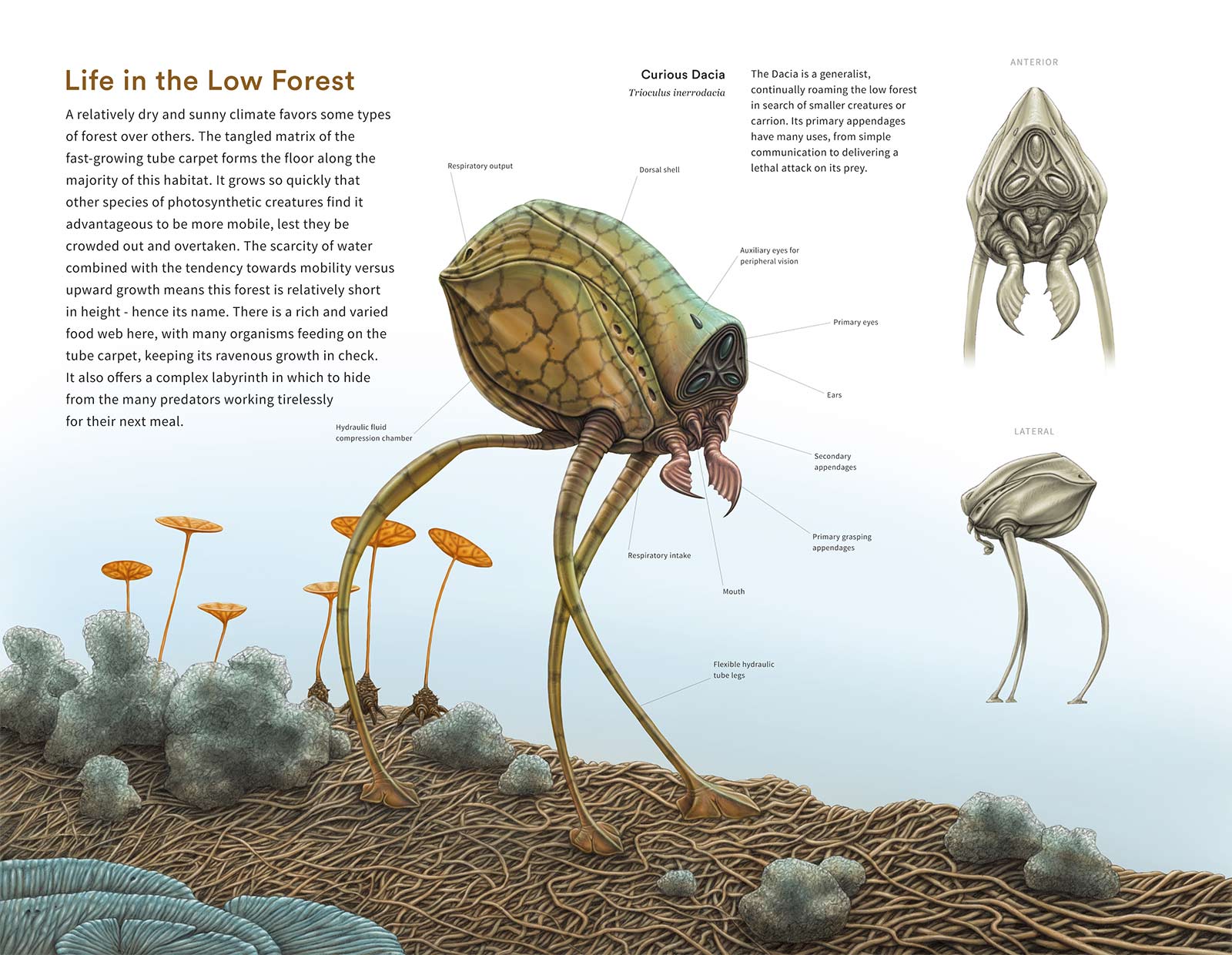
Life in the Low Forest
2021, digital
An inquisitive generalist
The aptly named Curious Dacia is a roaming opportunist common in this region. Its forward-facing set of eyes hints at its predatory evolutionary history, but in this challenging environment, it has learned to be less picky about its food intake. Anterior grasping appendages evolved from simple killing mechanisms into a delicate pair of tools capable of being used for nearly any function. Standing about a meter and a half tall, the dacia can spot almost anything of interest on the horizon, and its trio of strong hydraulic legs can get it there with unexpected swiftness.
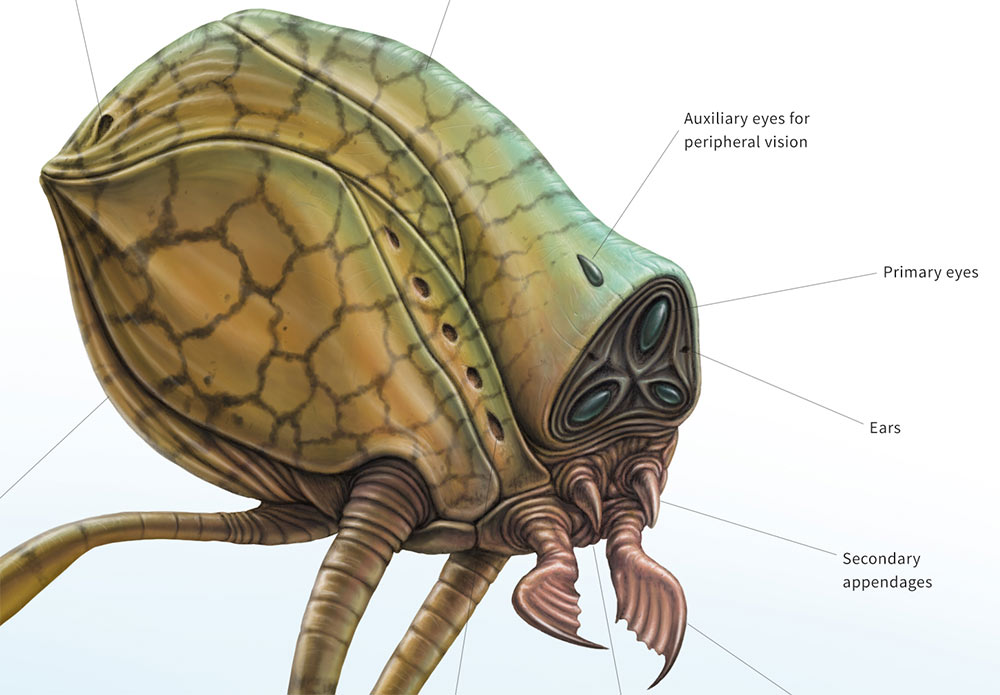
Curious Dacia
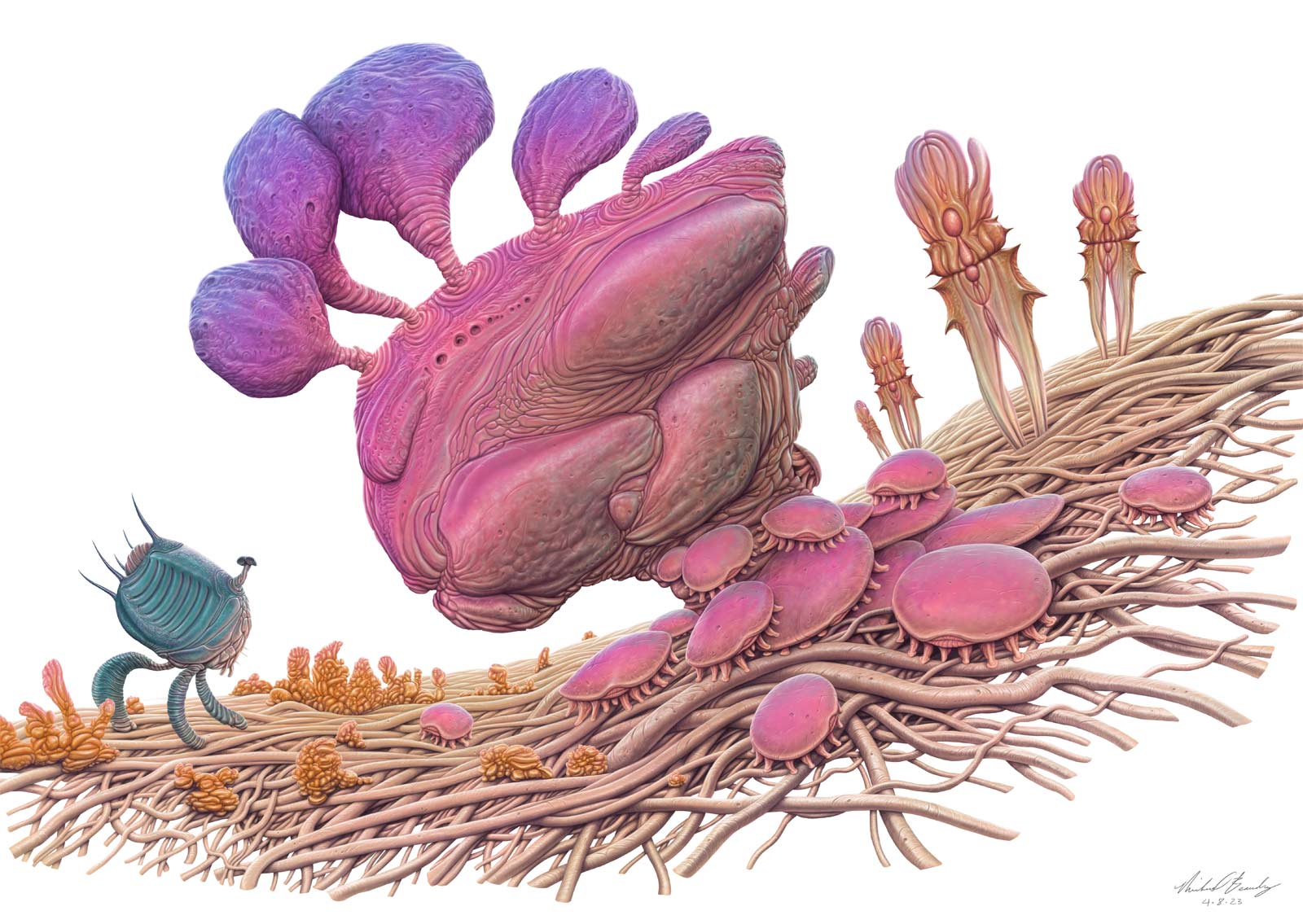
Interwoven
2023, digital
Like a giant pink warship, the Rosy Frigate punctuates the endless sea of tendrils. It hosts a crew of disk-shaped ravenous eating-machines called orbics. It is the orbics’ duty to keep the creeping tendrils from strangling and overtaking their home. Fading daylight signals their departure from the safe cluster beneath their giant companion to begin the night’s work of clearing new growth in the near vicinity. Each orbic can consume half its body weight in tube-carpet flesh every night, ensuring they will always have a place to return to at dawn. A Dwarf Blue Cortina observes the melee in confusion. Anything larger than an orbic will send it leaping away for cover, as its curiosity is matched only by its caution. The stoic quartet of Reponos standing solemnly in the background is incapable of seeing or hearing the events taking place nearby. Their role in this ecosystem turns out to be rather bizarre.
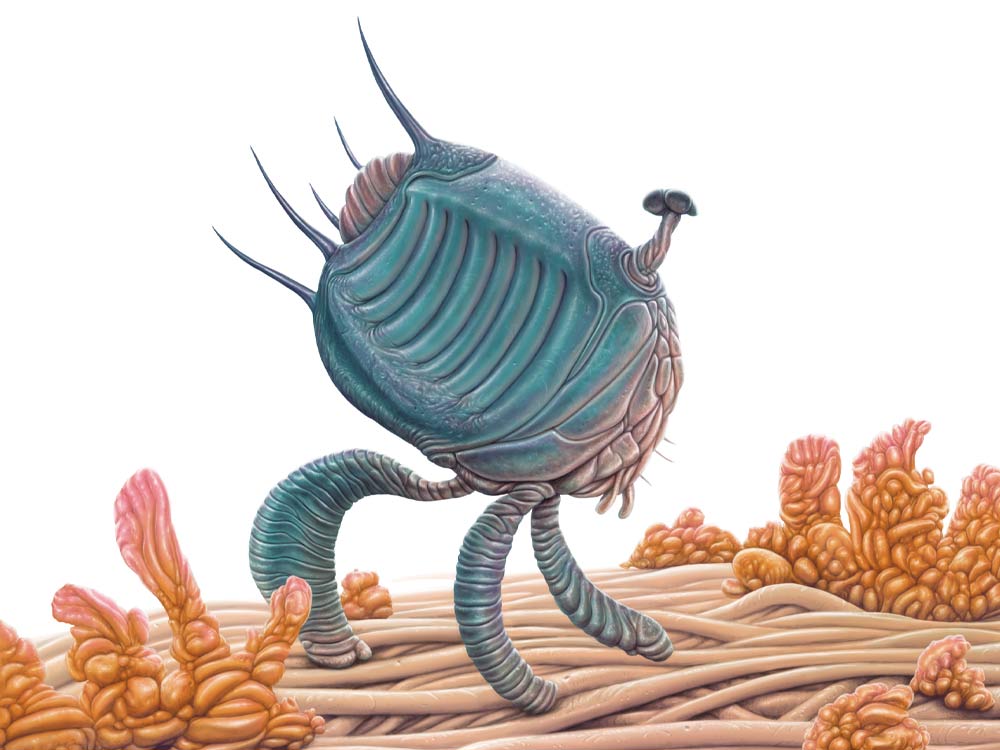
Dwarf Blue Cortina
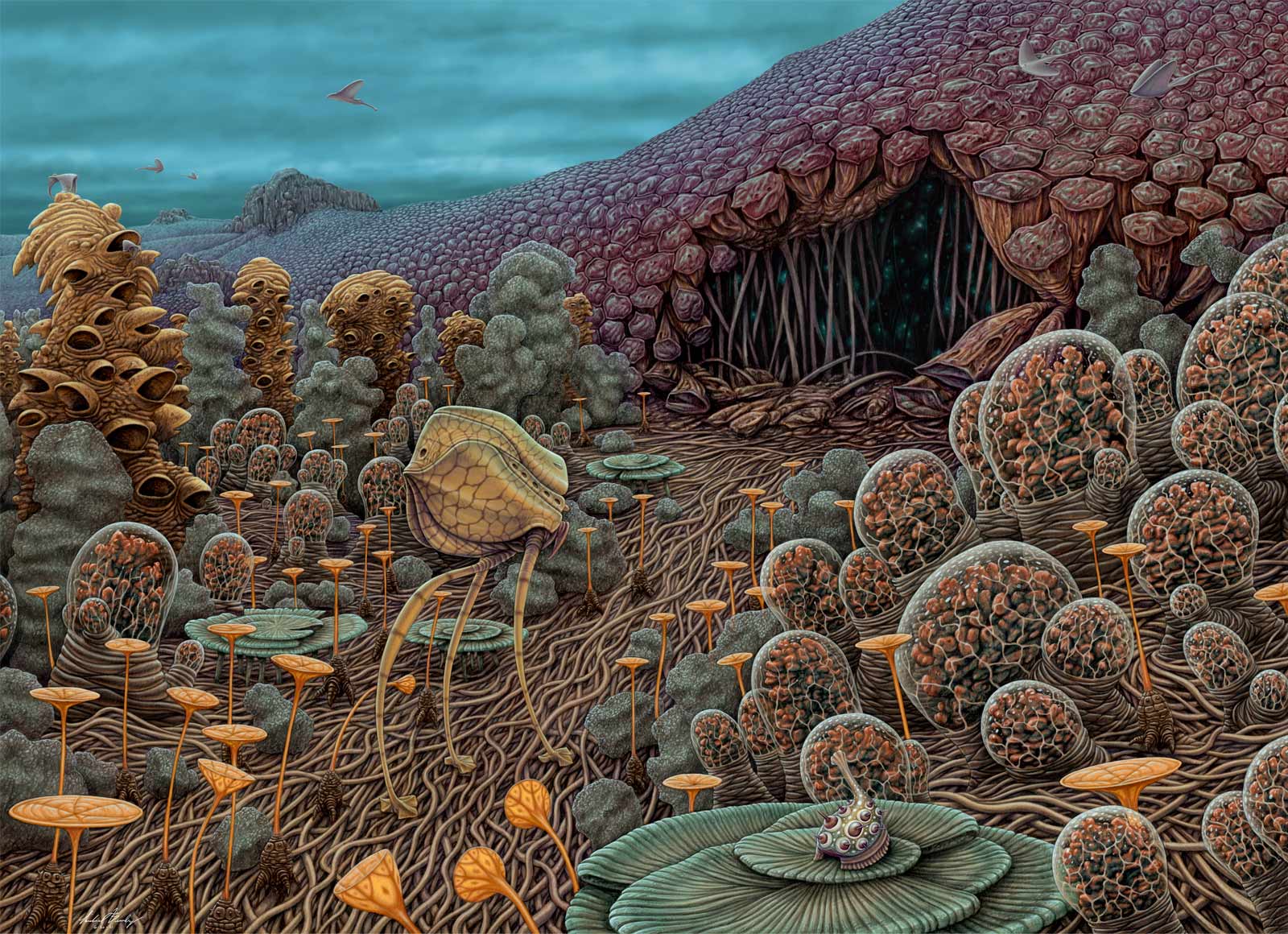
Full of Stars
2021, digital
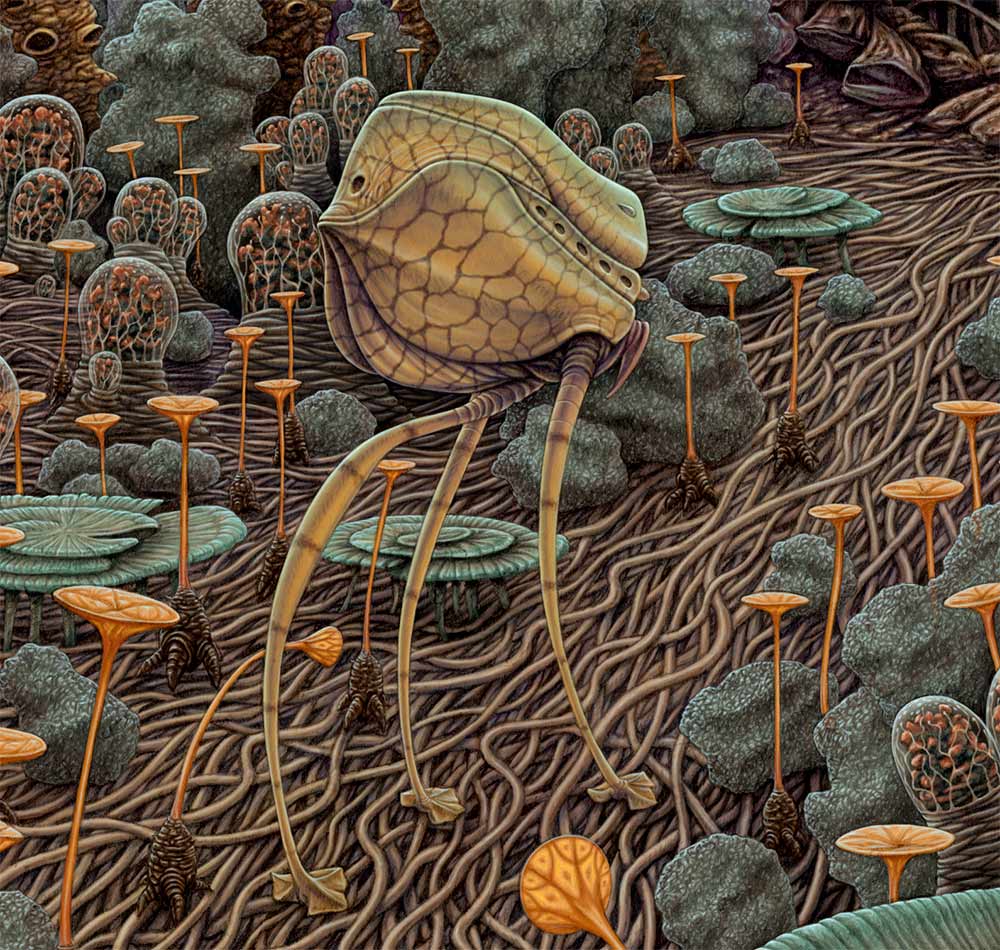
Curious Dacia
Most of the obligate photosynthetic creatures here must shift position every few days to keep from being overtaken by the tube carpet. The blob-like sea-foam colored organism, called the Foamspire, adopts a different strategy. A very simple lifeform, it consists of a matrix of thin membranes surrounding air pockets, and has a consistency similar to styrofoam or a large mass of bubbles. It grows primarily by absorbing sunlight, as well as dust and atmospheric plankton for nutrients. The foamspire is so light and amorphous that even when stacked several meters high, the tube carpet cannot obtain a purchase on it and thus use it as a scaffold as it would normally atttempt on other structures. The same winds that brings it nutrients also help the foamspire reproduce. During storms, the high winds blow pieces of this ephemeral creature far and wide across the low forest, and each separated section starts a new colony.
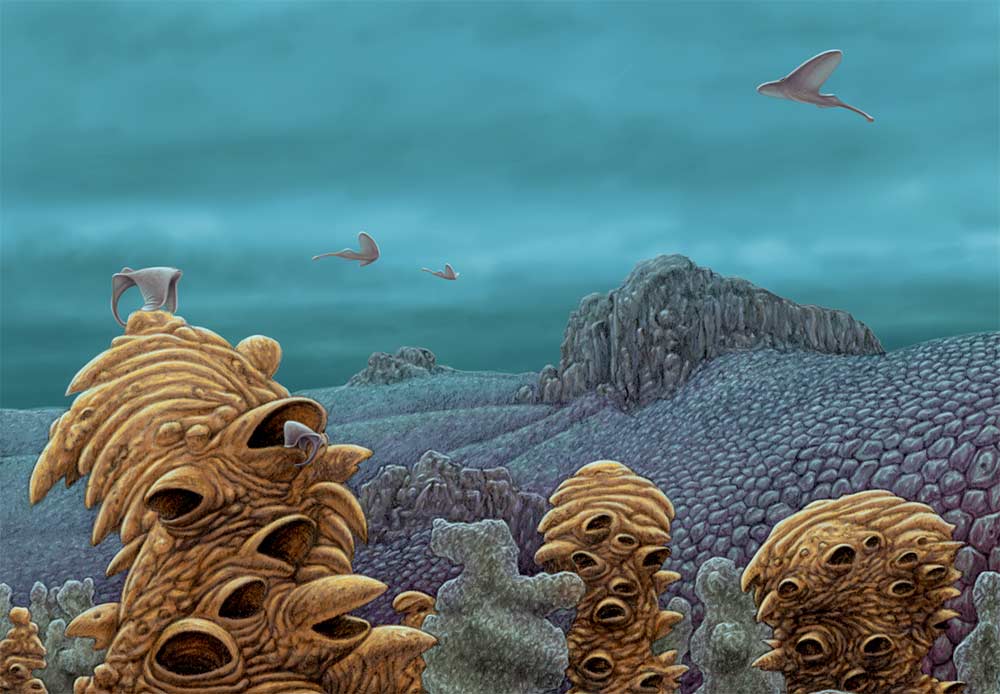
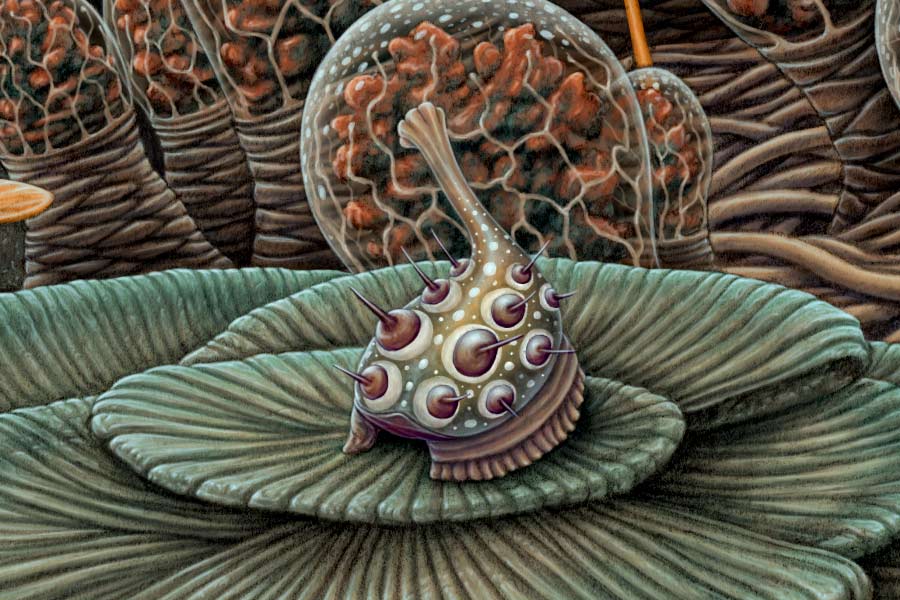
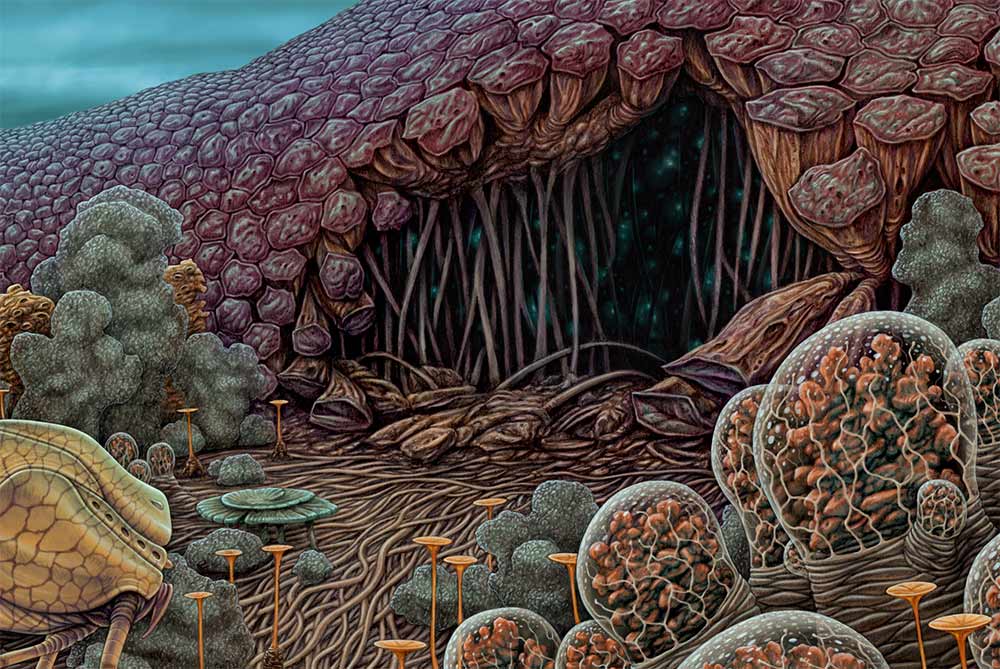
A stark biocline looms ahead.
The season's storms had taken their toll, opening up an organic cave in the otherwise sealed mountain canopy forest. Encouraged by the prospect of shelter from more incoming inclement weather, the dacia considers entering the dark, yet inviting refuge. The glittering biolights beckon, but this new environment is far stranger than anything it’s ever known.
